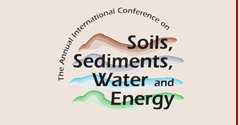Article Title
Use Of High Concentration Magnesium Sulfate Solution To Remediate Petroleum Impacted Groundwater
Abstract
Anaerobic degradation is the dominant driving force in natural attenuation of petroleum contamination in the subsurface. The contribution to natural attenuation by electron acceptors other than oxygen, such as nitrate, iron III, manganese IV, sulfate, and even carbon dioxide, has been the subject of considerable research in recent years. Kolhatkar et al. (2000), Wiedemeier et al. (1999), and Wilson et al. (2002) have shown that of these natural anaerobic processes, sulfate reduction accounts for most of the degradation The use of these alternative electron acceptors has been shown to have many potential advantages over the traditional approach of attempting to add dissolved oxygen to the plume. The case studies presented will demonstrate the benefits of using high concentrations of Magnesium Sulfate solution (>1,000 mg/l) to stimulate the biodegradation of petroleum contaminants in groundwater under field conditions at various sites. Many of these sites have had other technologies applied prior to applications. Graphics depicting the historical concentrations and reduction trends will be provided. In addition to the relatively rapid degradation of petroleum compounds such as benzene, toluene, ethylbenzene and xylenes (BTEX), this technology is quite cost effective in comparison to other currently available remediation techniques. A description of the technology, site selection criteria, dosage determination, and field scale performance results demonstrating contaminant concentration reductions in groundwater of more than 90% within a few months at some sites will be presented. Magnesium Sulfate was selected for use due to availability, low cost, high solubility and the relative safety associated with handling. This technology has advantages over others for many sites where physical limitations (buildings, utilities, etc.) preclude other technologies.
Recommended Citation
Cuthbertson, James F.; Kaestner, Jeffrey A.; and Bruce, Lyle G.
(2010)
"Use Of High Concentration Magnesium Sulfate Solution To Remediate Petroleum Impacted Groundwater,"
Proceedings of the Annual International Conference on Soils, Sediments, Water and Energy: Vol. 12, Article 24.
Available at:
https://scholarworks.umass.edu/soilsproceedings/vol12/iss1/24
